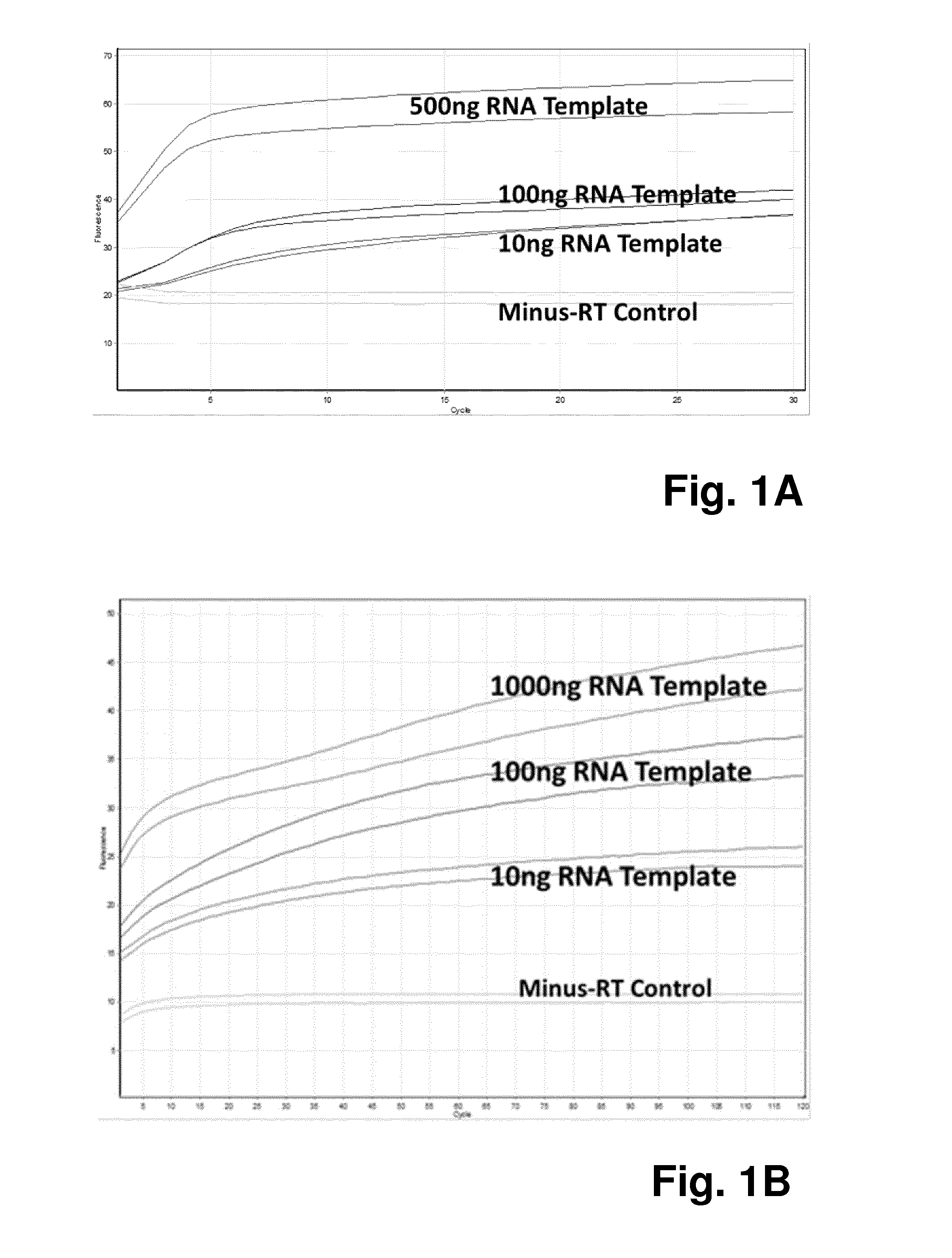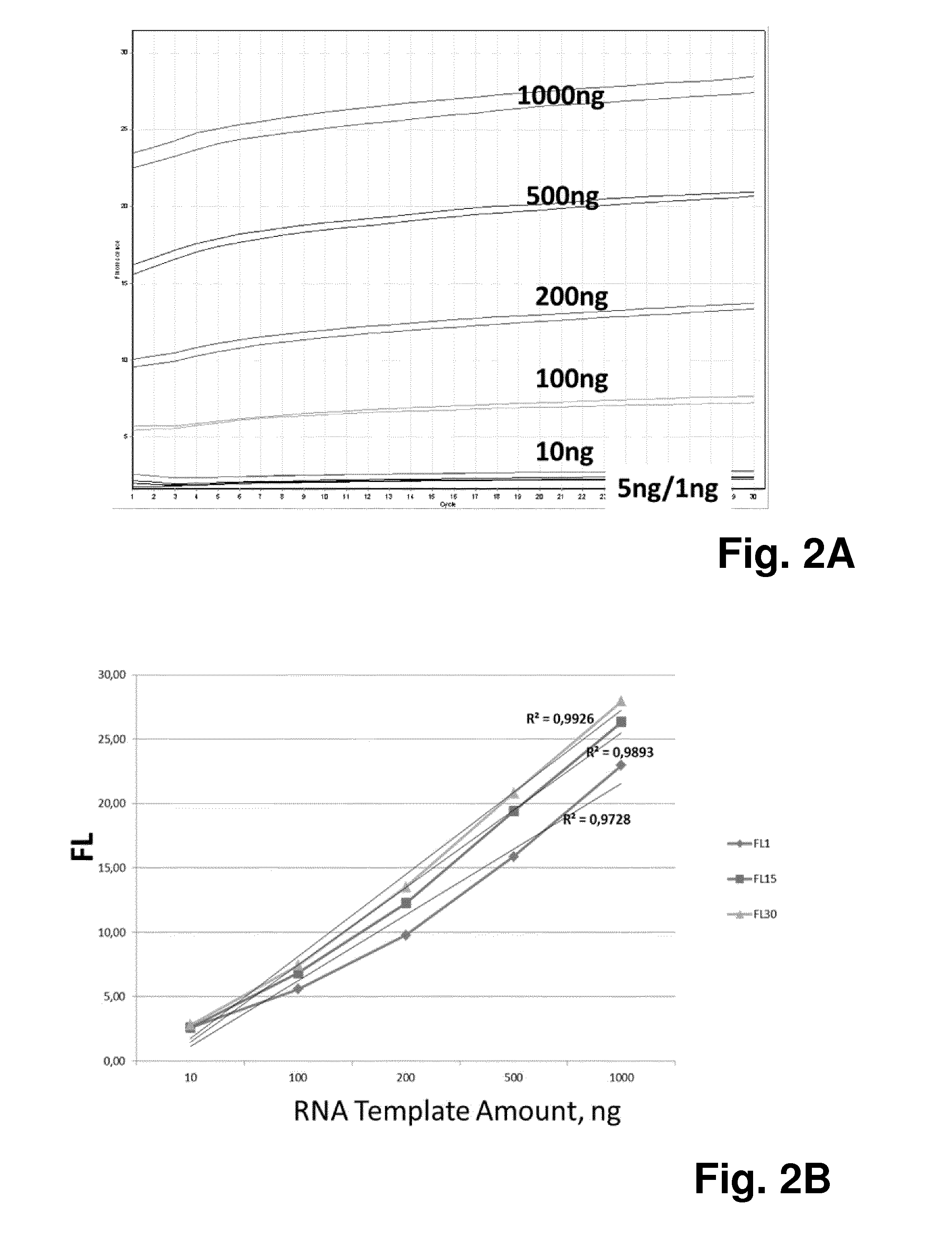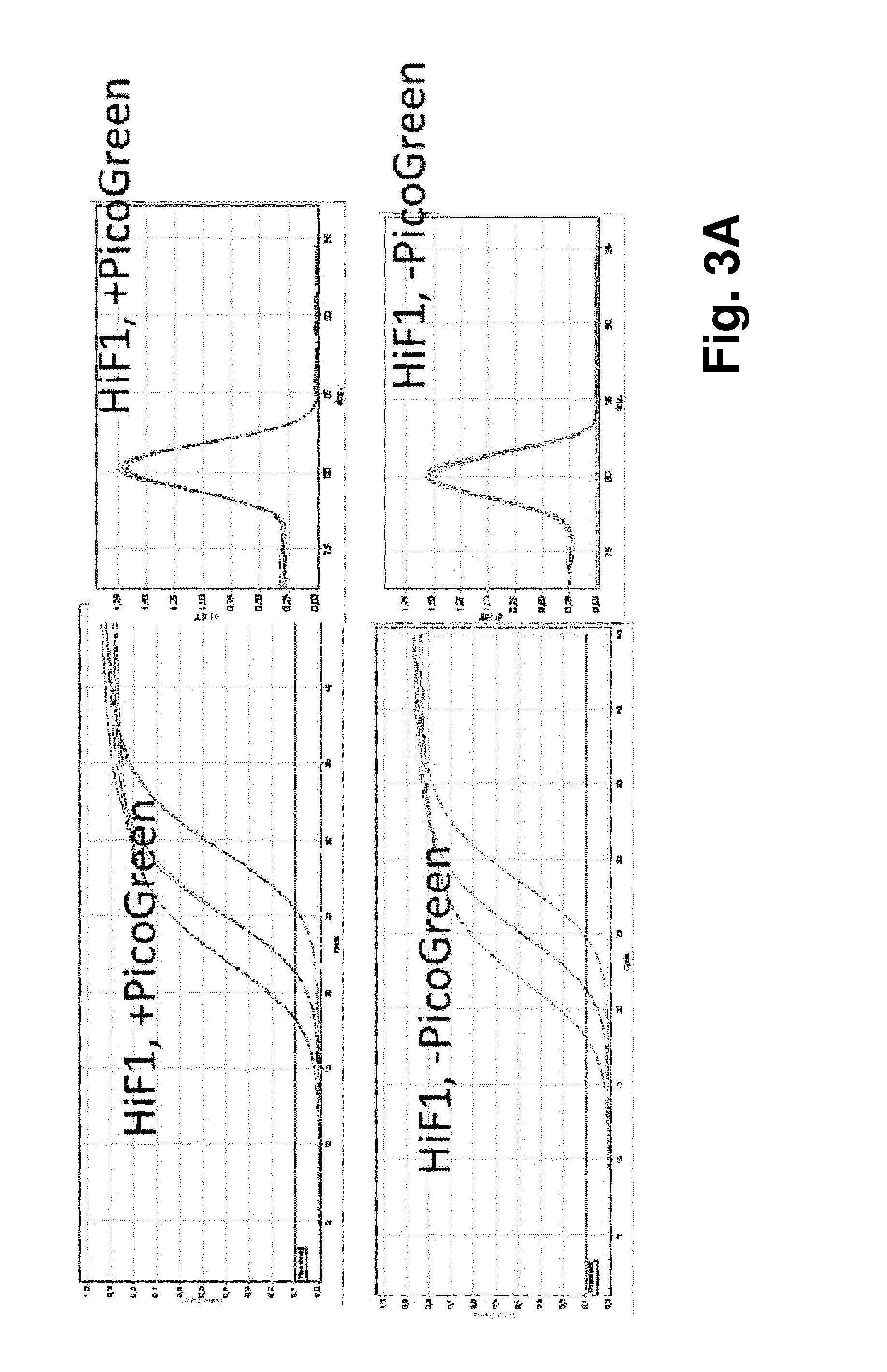Quantification of RNA
a nucleic acid and quantification technology, applied in the field of molecular biology, can solve the problems of shortened cdnas, shortened cdna-molecules, and shortened cdna-molecules,
- Summary
- Abstract
- Description
- Claims
- Application Information
AI Technical Summary
Benefits of technology
Problems solved by technology
Method used
Image
Examples
Embodiment Construction
[0067]With the present invention, an easy and straightforward method to directly monitor reverse transcriptase reaction in real time was developed. As an exemplary fluorogenic dye to be employed in the method, kits and uses according to the invention, the fluorogenic dye PicoGreen was chosen for its ability to selectively detect DNA:RNA hybrid in the presence of ssDNA and RNA.
[0068]In first experiments it was tested whether PicoGreen can detect cDNA in real time with the standard reverse transcription procedure of the QuantiTect Reverse Transcription kit (QIAGEN): Different amounts of total cellular RNA exacted from cultured HeLa cell line(10 ng, 10 ng, and 500 ng) were first treated with genomic DNA (gDNA) Wipeout buffer at 42° C. for 2 minutes to remove gDNA, and then mixed with all reverse transcription reaction components provided in the kit (Quantiscript Reverse Transcriptase, Quantiscript RT Buffer, RT Primer Mix, RNase-free water) following the manufacturer's instructions, as...
PUM
 Login to View More
Login to View More Abstract
Description
Claims
Application Information
 Login to View More
Login to View More - R&D
- Intellectual Property
- Life Sciences
- Materials
- Tech Scout
- Unparalleled Data Quality
- Higher Quality Content
- 60% Fewer Hallucinations
Browse by: Latest US Patents, China's latest patents, Technical Efficacy Thesaurus, Application Domain, Technology Topic, Popular Technical Reports.
© 2025 PatSnap. All rights reserved.Legal|Privacy policy|Modern Slavery Act Transparency Statement|Sitemap|About US| Contact US: help@patsnap.com



